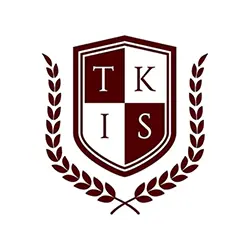Possessive Apostrophe is an essential punctuation mark that shows ownership in writing. Understanding how and when to use it can make a big difference in clarity and accuracy. It may seem tricky at first, but once the rules are clear, students can easily master this grammar concept. This guide will explain how to use the possessive apostrophe properly, helping KS1 and KS2 students avoid common mistakes.
What Is the Possessive Apostrophe?
A possessive apostrophe is used to indicate that something belongs to someone or something. It’s placed before or after the letter s, depending on whether the noun is singular or plural. The apostrophe helps clarify ownership in a sentence and can be used for both common and proper nouns.
How to Use the Possessive Apostrophe
Singular Nouns
For most singular nouns, you add ’s to the end of the word to show possession.
Example:
- The dog’s bone (The bone belongs to the dog.)
- Thomas Keith’s website (The website belongs to Thomas Keith Online Independent School.)
Plural Nouns
When the plural noun ends in s, you simply add an apostrophe (’) after the s to show possession.
Example:
- The dogs’ park (The park belongs to the dogs.)
- The teachers’ lounge (The lounge belongs to the teachers.)
However, if the plural noun does not end in s, you add ’s to indicate possession.
Example:
- The children’s books (The books belong to the children.)
- The people’s choice (The choice belongs to the people.)
Proper Nouns
For names ending in s, there are two acceptable options. You can either add ’s or just an apostrophe (’) after the s, depending on style preference.
Example:
- James’s guitar (or James’ guitar)
- Thomas’s school (or Thomas’ school)
Both forms are correct, but some style guides prefer one over the other.
Common Mistakes to Avoid
While possessive apostrophe rules are straightforward, students sometimes make common mistakes. Here are a few to watch out for:
- Don’t confuse possessive apostrophes with plural forms:
- Incorrect: The cat’s are playing.
- Correct: The cats are playing. (No apostrophe needed for plurals.)
- Be careful not to use apostrophes with possessive pronouns:
- Incorrect: The book is her’s.
- Correct: The book is hers. (Possessive pronouns like hers, ours, and theirs don’t require an apostrophe.)
Example of Possessive Apostrophes in Use
Thomas Keith Online Independent School provides great examples of possessive apostrophes in their lessons. For example, students might learn how “the school’s policies” refer to policies that belong to the school, or how “students’ assignments” indicate the tasks assigned to all the students.
By using possessive apostrophes, students can express ownership clearly and accurately, avoiding confusion in their writing.
FAQs
Q1: Where does the apostrophe go for singular nouns?
A1: Add ’s to the end of singular nouns. For example: “The boy’s ball” means the ball belongs to the boy.
Q2: What about plural nouns ending in ‘s’?
A2: If the plural noun ends in s, just add an apostrophe after the s. For example: “The girls’ dresses” means the dresses belong to the girls.
Q3: Should I add an apostrophe to a possessive pronoun?
A3: No, possessive pronouns like hers, ours, and yours already show possession and do not require an apostrophe.
Conclusion
The possessive apostrophe is an essential punctuation mark that students need to master to write with clarity and accuracy. Whether used for singular or plural nouns, it helps show ownership in a clear, structured way. Schools like Thomas Keith Online Independent School teach these rules through engaging lessons and examples, helping students understand how to apply them correctly. With continued practice, mastering the possessive apostrophe will become second nature, improving both writing and grammar skills.




